PART 2 of 2
By
Servando Gonzalez
April 13, 2014
NewsWithViews.com
On the morning of October 27, 1962, at the peak of the missile crisis, a bizarre incident occurred. An American U-2, piloted by Major Rudolph Anderson, Jr., was detected over the eastern part of Cuba and a SAM site at Los Angeles, near Banes, in Oriente province, fired one or several antiaircraft missiles and shot it down.
Several conflicting interpretations have been advanced to explain the strange incident of the downing of the U-2.
According to Seymour Hersh, there is strong evidence that, on October 26, 1962, a Cuban army unit attacked and overran a Soviet-manned SAM base at Los Angeles, near Banes, in the Oriente province, killing many Soviets and seizing control of the site. Hersh based his article on information partly drawn from an interview with former Department of Defense analyst Daniel Ellsberg, who was himself citing classified material from a post-crisis study of the event.[16] The speculation was based on an intercepted transmission from the Soviet base at Los Angeles indicating heavy fighting and casualties. Adrián Montoro, former director of Radio Havana Cuba, and Juan Antonio Rodríguez Menier, a senior Cuban intelligence officer who defected in 1987 and was later living in the U.S., later confirmed Ellsberg’s information.[17]
When the news that a U-2 had been shot down in Cuba reached the ExComm (Executive Committee of the National Security Council), most members thought that war was just around the corner. In fact they had decided earlier that if a U-2 were shot down, the SAM battery responsible would be immediately knocked off. “It was the blackest hour of the crisis,” Roger Hilsman later recalled.[18]
Carlos
Franqui, a journalist who at the time was close to Castro, wrote that
Castro himself told him that he had given the order to shoot down the
plane, to see if there was to be war or not.[19]
Some years later, in his Memoirs, Khrushchev gave his own version of the
event, which confirmed Franqui’s story. According to the Soviet
Premier, “Castro gave an order to open fire, and the Cubans shot
down an American U-2 reconnaissance plane.”[20]
Fortunately, cool heads prevailed and Castro’s second attempt to
push the U.S. and the Soviet Union into a nuclear Armageddon failed.
But wait. This is not the end of the story. Castro had another ace up his other sleeve.
Late in the night of October 26 1962, Castro visited the Soviet embassy in Havana and stayed through the early hours of the next day writing a letter to Khrushchev. The most important part of the letter is Castro’s efforts to convince Khrushchev that an American invasion of Cuba was imminent, and his request that, in case of such invasion, the Soviet Union should launch a preemptive nuclear attack against the United States. Castro’s words were,
I tell you this because I believe that the imperialists’ aggressiveness is extremely dangerous and if they actually carry out the brutal act of invading Cuba in violation of international law and morality, that would be the moment to eliminate such danger through an act of clear legitimate defense, however harsh and terrible the solution would be, for there is no other.[21]
Some Castro-friendly members of the National Security Archive (most likely a CIA front) have tried to deny the fact that Castro asked Khrushchev to launch a preemptive nuclear attack on the U.S. But in a letter of October 30, answering Castro, a terrorized Khrushchev refers to Castro’s request in very precise terms:
In your cable of October 27 you proposed that we be the first to launch a nuclear strike against the territory of the enemy. You, of course, realize where that should have led. Rather than a simple strike, it would have been the start of a thermonuclear war.[22]
A few days later, splitting semantic hairs, Castro emphatically denied that he had ever asked Khrushchev to launch a nuclear attack against the U.S. But Khrushchev was adamant. In the Soviet Premier’s clear and specific own words, “Castro suggested that in order to prevent our nuclear missiles from being destroyed, we should launch a preemptive strike against the United States.”[23]
Khrushchev’s view is confirmed by other source. In December 1962, the Hearst-owned San Francisco Chronicle and News Call Bulletin published a UPI cable claiming that Ernesto “Che” Guevara had told a reporter in Havana that “to defend [himself] against aggression” Fidel Castro had planned a nuclear attack on key U.S. cities, including New York. Though the Chronicle buried the story on page 16, the News Call Bulletin ran a dramatic front-page headline in big, bold letters: “How Castro Plotted Atomic Attack on U.S.!”
Finally, Hornberger takes at face value two key points of the Cuban missile crisis standard mythology:
“Sure, the Soviets had to take their missiles out of Cuba, but so what? The missiles had been installed to deter a U.S. invasion of the island. That strategy worked. And once Kennedy gave the no-invasion guarantee, there was no further reason to keep the missiles in Cuba.”
The problem with that assertion is that, in the first place, Khrushchev didn’t want to protect Castro. Actually, he wanted to get rid of him because Castro had become a liability, not an asset. Secondly, the presence of Soviet medium-range strategic nuclear missiles in Cuba was never been confirmed. Thirdly, the so-called “Kennedy-Khrushchev pact” never existed.
In his memoirs Khrushchev claims that the main reason for sending strategic missiles to Cuba was because Castro feared an American invasion. But it is very difficult to believe that Khrushchev planned to install missiles in Cuba to protect Castro. In the first place, because Nikta Khrushchev would never had placed nuclear warheads near the hands of trigger-happy Castro. Secondly, because in April of 1962, when he allegedly got the idea, Khrushchev himself had tried to overthrow the Cuban leader by force. But Castro discovered the plot (most likely with CIA’s help), neutralized it, and expelled from Cuba Soviet Ambassador Sergei Kudryatvsev (who also moonlighted as a senior GRU officer) and a group of his embassy thugs who, in coordination with some members of the pro-Soviet Cuban Communist party, were conspiring to overthrow Castro through a coup d’état.
Though initially Castro said that the USSR hds recalled its ambassador, some time later confessed that “he had expelled Kudryavtsev” for having engaged in “open and excessive political activities.”[24] Other sources, however, claim that actually Castro detained Kudryavtsev and placed him under military custody until he was embarked on a Moscow-bound Soviet plane.[25]
Moreover, despite a mountain of books claiming the contrary, the presence of Soviet medium-range strategic missiles and their nuclear warheads on Cuban soil has never been proved.
According to current Cuban missile crisis mythology, in the morning of October 16, 1962, CIA photo interpreters showed president Kennedy U-2 photos confirming the presence of SS-4 Sandal Soviet nuclear missiles in Cuba. This was the ultimate, incontrovertible proof that the Soviets had secretly deployed strategic missile bases in Cuba.
But now, both the high-level U-2 photos and the low-level photos taken by RF-101 Voodoo planes can be downloaded in full resolution from the Internet. Problem: there are no images of SS-4 Sandal missiles in those photos.
What the photos show, though, are long wooden crates covered by tarps, which the CIA believed contained the missiles. The photos also show some concrete bunkers, which the CIA believed contained the nuclear warheads for the missiles. There are also photos of Soviet ships sailing out of Cuba with long wooden crates covered with tarps on their decks, which the CIA believed contained the missiles. All the CIA’s alleged facts were based on beliefs. The CIA sold Kennedy a bill of goods.
As I mentioned above, the presence of Soviet strategic nuclear missiles in Cuba in 1962, much less their nuclear warheads, has never been proved. But don’t take my word for it.
In a session with newsmen in the Pentagon on the night of October 22, less than an hour after Kennedy’s speech telling the American people of the situation in Cuba, journalists asked Secretary of Defense Robert McNamara if the U.S. knew whether the nuclear warheads for the missiles were in Cuba too. McNamara’s answer was quite intriguing: “We don’t know. Nuclear warheads are of such size that it is extremely unlikely we would ever be able to observe them by the intelligence means open to us.”[26] Moreover, author Neville Brown pointed out that, “warheads were never seen in Cuba, so we don’t know what the Soviets had in mind.”[27]
One of the undying myths about the U.S.’s inability to tame Castro for so many years is the existence of the secret Kennedy-Khrushchev Pact —or “agreement,” or “understanding,” as some people liked to call it. Hornberger repeats it verbatim:
With the world at the brink of nuclear war, he [Kennedy] struck a deal with the Soviet premier, Nikita Khrushchev, in which he promised that the United States would never invade Cuba, thereby ensuring that the communists could maintain their outpost 90 miles away from American shores in perpetuity.
Contrary to popular belief, however, the famous Kennedy-Khrushchev Pact never existed.
The problem with the existence of such a document, or even with such an “agreement” or “understanding,” is that in any compromise both parties agree to do something. According to the prevalent myth, Khrushchev agreed to remove the nuclear missiles from Cuba in exchange for the American promise not to invade Cuba. But, as I have shown above, the available evidence shows that no Soviet nuclear missiles were ever on the island, and no one is going to believe that President Kennedy was so naïve as to exchange something for nothing.
Moreover, in 1970, Secretary of State Henry Kissinger, concerned over the submarine base the Soviets were building in Cienfuegos, a port on the Southern coast of Cuba, hunted through the State Department’s files looking for the written agreement he was sure President Kennedy had signed with Khrushchev. He discovered, to his utter amazement, that there was none, either oral or in writing.[28]
Furthermore, if the agreement ever existed, it has the dubious honor of being one of the few international agreements to have been applied a priori, long before it was signed, because the U.S. government’s harassment of the anti-Castro Cubans in the U.S. began a year and a half before the Cuban missile crisis, just after the Bay of Pigs invasion.
The non-existing Kennedy-Khrushchev pact is nothing but a concoction to justify the unjustifiable. If, despite rhetoric on the contrary, American presidents from John F. Kennedy to George W. Bush have proved unwilling to get rid of Fidel Castro, it is not because a non-existent pact forbids them to do so, but because of some hidden motives unknown to the American people.
In another part of his article, Mr. Hornberger expresses his belief that “In fact, there is every reason to believe that the CIA was behind the 1967 extrajudicial execution of Che Guevara.” Well, there is absolutely no doubt about it. Actually, recent evidence points to the fact that not only the killing of Che Guevara,[29] but also the killing of Salvador Allende,[30] the assassination of Hugo Chávez[31] and perhaps even the downing of the Cuban airliner in 1973[32] were CIA-Castro joint operations.
I could keep deconstructing one by one most assertions about Castro Hornberger wrote in his article, but that would made this one too long. But this is not the main problem with his article. The main problem is that he doesn’t mention the big elephant in the living room: the Council on Foreign Relations.
Since President Harry Truman signed the National Security Act in July 1947, which created the National Security Council, the Central Intelligence Agency and the Joint Chiefs of Staff, and effectively officialized the already-existing national security state, all key positions of these organizations, as well as the State Department, have been under the control of CFR members. Actually, since its very creation, the national security state has been an operation totally under the control of the oil magnates, Wall Street banksters and CEOs of transnational corporations ensconced in the CFR. The national security state has been the tool these people have used to advance their spurious goals under a cover of patriotism.
Now, how can we explain that an educated, well-informed person like Mr. Hornberger can write an article mostly based on wrong information? The answer is because he apparently ignores, as I ignored it until a few years ago, that the national security state works on two levels: a physical, visible one, evidenced in military aggressions, political assassinations, promotion of terrorism, dirty wars and overthrowing democratically elected leaders, and also on a more subtle and devious mental level, in the form of carefully planned and executed psychological warfare operations. One of these consists in distorting the historical record.
As I mentioned above, the available evidence indicates that the Cuban missile crisis was a hoax. There were never nuclear warheads in Cuba, among other reasons, because never before or after the crisis had the Soviets deployed nuclear warheads beyond their borders. Nonetheless, dozens of books and hundreds of articles have been written, mostly by secret agents of the national security state, trying to scare us about how close we were to the brink of nuclear annihilation during the Cuban missile crisis.
But, if this is true, how can we explain that, at the most critical moment during the crisis, President Kennedy ordered the removal of the fuses and warheads from the Jupiter missiles in Turkey. Also, Why he didn’t order an in situ inspection of the long boxes on the decks of Soviet ships bound for the USSR? For these and other reasons it is difficult to avoid the conclusion that, except for Castro’s efforts, there was no great danger of a nuclear confrontation during the crisis, and that some people at the highest levels of the U.S. government knew it.
So, how close were we to the brink of nuclear Armageddon during the Cuban missile crisis? Well, not too close.
Then, why have secret agents of the national security state devoted so much time and effort writing articles and books to convince us of the grave threat of nuclear annihilation we were under during the crisis? Because, by giving credibility to past, non-existing threats (the Cold War), they give credibility to non-existing present ones (the War on Terror). Nevertheless, it is never too late to set the record straight.
|
The bottom line is that the national security state is not a cause, but a symptom. It is just the efficient tool some powerful people have been using to advance their evil plans of world domination and slavery, a plan they euphemistically call the New World Order.
These are the same people who put their secret agent Fidel Castro in power in Cuba in 1959 and have kept him there untouched for more than half a century. These are the same people who currently are trying harder to keep Castroism alive and well in Cuba even after the death of Castro.
Click here for part -----> 1, 2,
� 2014 Servando Gonzalez - All Rights Reserved
Footnotes:
1.
Jacob Hornberger, “The
Evil of the National Security State,” LewRockwell.com, July
25, 2014. The article originally appeared in several parts at Future
of Freedom, a monthly journal of The Future of Freedom Foundation.
2.
See, “Aznar
exige el fin del embargo a Cuba para favorecer la democracia en la isla,”
Público.es, April 11, 2010
3.
See, “Hillary
Clinton scorns ‘entrenched’ Cuba,” BBBNews,
April 10, 2010.
4.
See Ellis Cose, “Castro no cede un ápice. Fidel no le ve
mucho valor a una iniciativa de EEUU,” Newsweek en Español,
January 20, 1999, p. 17. See also, AFP, “El régimen castrista
rechaza las medidas de EEUU para flexibilizar el embargo,” La
Razón, January 10, 1999.
5.
Loree Wilkerson, Fidel Castro’s Political Programs from Reformism
to Marxist Leninism (Gainesville, Florida: University of Florida
Press, 1965). p. 81.
6.
Mark Falcoff, “How to Think about Cuban-American Relations,”
in Irving Louis Horowitz, ed., Cuban Communism, Fifth Edition
(New Brunswick, N.J.: Transaction Books, 1984), p. 547.
7.
Mario Lazo, Dagger in the Heart (New York: Twin Circle, 1968),
p. 182.
8.
Ronald Kessler, Inside the CIA (New York: Pocket Books, 1992),
p. 53.
9.
See, Ramón B. Conte, Historia oculta de los crímenes
de Fidel Castro (Self-published, n.p., 1995), pp. 15-30.
10.
Castro being recruited by the CIA and his active participation in the
Bogotazo riots is explained and documented in extensive detail in my book
Psychological Warfare and the New World Order: The Secret War Against
the American People (Hayward, California: Spooks Books, 2012).
11.
See, Leuren Moret, “Kissinger, Eugenics and Depopulation,”
Rense.com, November 20, 2013. A copy of the NSC 200 can be downloaded
at nixon
archives.
12.
Ernesto Betancourt, “Is Castro Planning a Preemptive
Strike Against the U.S.?” (Washington, D.C., 1996), p. 4.
13.
Jeanne Kirkpatrick, “Is a Stubborn Castro Testing U.S. Defenses?,”
the Miami Herald, March 31, 1991, p. 3C.
14.
Joseph B. Treaster, “Defecting General Says Cuba Has Plan to Raid
Base in the U.S. if It Is Attacked,” the New York Times,
October 11, 1987.
15.
Andrew Tully, White Tie and Dagger (New York: Pocket Books, 1968),
pp. 74-78. Tully mistakenly believes the plot was a Soviet idea, but it
was Castro’s. The plot is also mentioned in Andres Oppenheimer,
Castro’s Final Hour (New York: Simon and Schuster, 1992).
16.
Seymour Hersh, “Was Castro Out of Control in 1962?”
the Washington Post, October 11, 1987.
17.
Adrián Montoro, “Moscow Was Caught Between Cuba and U.S.,”
the New York Times, November 17, 1987. Rodríguez Menier
in personal communication to the author, December 20, 1994. Menier claims
he heard the story from Gen. José Abrahantes.
18.
Roger Hilsman, To Move a Nation (Garden City, N,Y.: Doubleday,
1967), p. 220.
19.
Carlos Franqui, Family Portrait With Fidel (New York: Vintage,
1984), p. 193.
20.
Nikita S. Khrushchev, Khrushchev Remembers, translated and edited
by Strobe Talbot (Boston: Little, Brown and Company, 1970), p. 499.
21.
See, Document 45:
Prime Minister Fidel Castro’s letter to Premier Khrushchev, October
26, 1962, in Laurence Chang and Peter Kornbluh, eds., The Cuban Missile
Crisis, 1962: A National Security Archive Documents Reader (New York:
The New Press, 1992), p. 189. (Castro’s letter reprinted from the
international edition of Granma).
22.
See, Document
57,: Premier Khrushchev’s letter to Prime Minister Fidel Castro,
October 30, 1962, in Laurence Chang and Peter Kornbluh, eds., The
Cuban Missile Crisis, 1962, p. 243.
23.
Nikita Khrushchev, Khrushchev Remembers: The Glasnost Tapes (Boston:
Little, Brown and Company, 1990), p. 177.
24.
See, Lisa Howard, “Castro’s Overture,” War/Peace
Report, September 1983, p. 4.
25,
Domingo Amuchástegui, “Cuban Intelligence and the October
Crisis,” in James G. Blight and David A. Welch, eds., Intelligence
and the Cuban Missile Crisis (London: Frank Cass, 1998), p. 92.
26,
“Red Missiles in Cuba: Inside Story from Secretary McNamara,”
U.S. News and World Report, November 5, 1962, p. 45.
27,
Neville Brown, Nuclear War (New York: Praeger, 1964), p. 80.
28,
Kurt M Campbell and James B. Steinberg, Difficult Transitions: Foreign
Policy Troubles at the Outset of Presidential Troubles (Washington,
D.C.: The Brookings Institution, 2008), p. 118.
29,
Information surfaced in the mid-1970s confirmed suspicions that Castro,
in cahoots with Bolivian Communist leaders, arranged the betrayal of Ché.
According to Dariel Alarcón Ramírez (“Benigno”),
one of Ché’s trusted men who was part of his guerrilla in
Bolivia, previous to Guevara’s departure for Bolivia, Castro held
a secret meeting with Mario Monje in Havana on December, 1966. Monje,
secretary general of the pro-Soviet Bolivian Communist Party, was instrumental
in Che’s demise by denying the guerrilla any help and leaving them
in total isolation. Benigno is convinced that Monje was following Castro’s
orders when he left Ché in the lurch. See, Dariel Alarcón
Ramírez Memorias de un soldado cubano. Vida y muerte de la
Revolución (Barcelona: Tusquets, 1997).
30,
Both Castro and the CIA collaborated in destabilizing the Allende government
—the CIA by painting him as a radical leftist and Castro by openly
criticizing him for not being radical enough. Moreover, if recently surfaced
information is true, Allende did not commit suicide: his Cuban security
chief, General Patricio de la Guardia, killed him, following Castro’s
direct orders. See my article “Fidel
Castro: asesino de Allende?.”
31,
See, Servando Gonzalez, “Hugo
Chávez: Another Victim of Castro’s High-Tech Political Assassinations?
32,
See, Servando González, The Secret Fidel Castro: Deconstructing
the Symbol (Oakland, California: Spooks Books, 2001), Chapter 3,
note 39, p. 383.
Servando Gonzalez, is a Cuban-born American writer, historian, semiologist and intelligence analyst. He has written books, essays and articles on Latin American history, intelligence, espionage, and semiotics. Servando is the author of Historia herética de la revolución fidelista, Observando, The Secret Fidel Castro: Deconstructing the Symbol, The Nuclear Deception: Nikita Khrushchev and the Cuban Missile Crisis and La madre de todas las conspiraciones: Una novela de ideas subversivas, all available at Amazon.com.
He also hosted the documentaries Treason in America: The Council on Foreign Relations and Partners in Treason: The CFR-CIA-Castro Connection, produced by Xzault Media Group of San Leandro, California, both available at the author's site at http://www.servandogonzalez.org.
His book, Psychological Warfare and the New World Order: The Secret War Against the American People is available at Amazon.com. Or download a .pdf copy of the book you can read on your computer, iPad, Nook, Kindle or any other tablet. His book, OBAMANIA: The New Puppet and His Masters, is available at Amazon.com. Servando's book (in Spanish) La CIA, Fidel Castro, el Bogotazo y el Nuevo Orden Mundial, is available at Amazon.com and other bookstores online.
His most recent book, I Dare Call It treason: The Council on Foreign Relations and the Betrayal of the America, just appeared and is available at Amazon.com and other bookstores online.
Servando's two most recent books in digital versions only are The Swastika and the Nazis: A Study of the Misuse of the Swastika by the Nazis and the first issue of the political satire series OBSERVANDO: American Inventors.
Website: www.servandogonzalez.org
E-Mail: comments@gmail.com



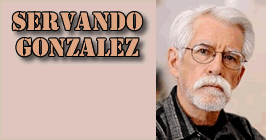
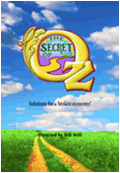

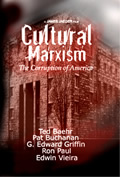
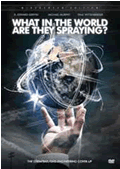
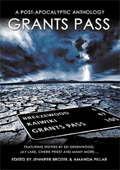




 Share
This Article
Share
This Article






